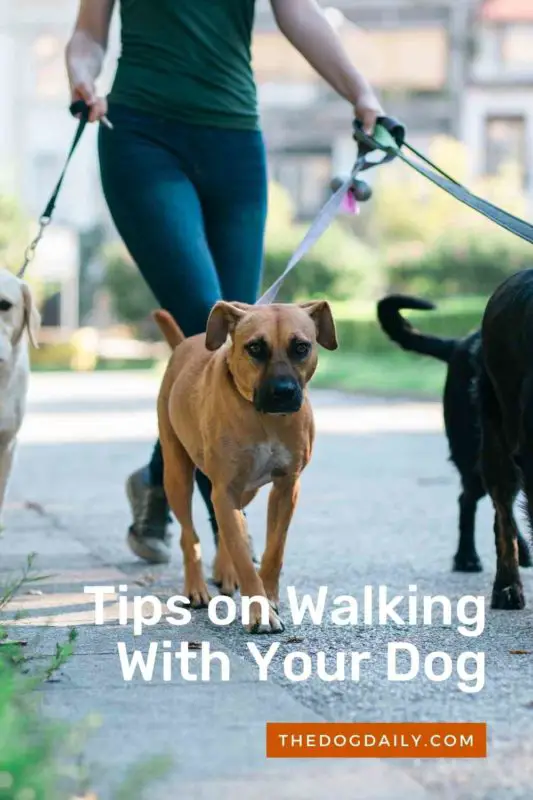Dog Walking: How Does Your Dog Move?
Try a little experiment with your dog:
- Have it stand perpendicular to you, with another person facing your dog about 3 feet away.
- Ask the other person to call your dog.
- As the dog moves toward that person, look at which foot it moves first.
Chances are, you won’t be able to tell — but you’re not alone. According to a study recently published in the science journal Cell Biology, experts who create museum exhibits, veterinary textbooks, and other visual depictions of four-legged animal motion incorrectly illustrate movement almost 50 percent of the time.
Which Foot First?
The study’s lead author, Gábor Horváth of Eötövos University in Budapest, Hungary, was surprised by the widespread confusion. The mystery of how four-legged animals walked was solved way back in the 1880s. Photographer Eadweard Muybridge demonstrated through still-shot images that all quadruped animals move by first moving their left hind foot, then their left front foot, followed by the right hind foot and the right front foot.
But Maryna Ozuna, founder and practitioner of Canine Kinaesthetics and training director of the Arizona Doggy Dude Ranch in Sierra Vista, Ariz., wasn’t surprised by the confusion and how many people tend to forget Muybridge’s breakthrough. “To expect dog owners to incorporate such acute visual assessment is expecting owners to see stuff that not one veterinarian in 100 can see,” she says. It could merely be that dogs walk too quickly for most of us, including veterinarians and other experts, to observe the detailed movements, which Muybridge could capture with his camera.
That doesn’t mean, however, that you can’t become more aware of how your dog walks and moves. The benefits of such awareness are considerable. “Dogs live in their bodies, and any restrictions to their bodies affect their ability to absorb information, process information, and respond to information,” Ozuma says.
Walking in Step With Your Dog
In other words, even if you can’t tell which foot your dog moves first, you can still help your dog to stride with greater comfort. Here are some ideas:
Ditch painful dog collars
Your dog is more comfortable walking with you when it’s wearing comfortable equipment. Most modern-day dog trainers strongly advise against using choke chains and prong collars, even if that dog tends to pull hard on its leash. Such collars can lead to serious behavioral problems because of the discomfort they cause.
If your dog’s a puller, invest in a head collar or a no-pull harness. A professional, positive reinforcement trainer can also help teach your dog that the sidewalk is no place to be a sled dog wannabe.
Get the right leash
Walking a dog is a lot easier for you both when using the right leash. A 6-foot leather leash is more comfortable to hold than commonly used retractable leashes — a handy feature if your dog suddenly decides to chase a squirrel and you need to grasp the leash.
Hold the leash correctly
To walk your dog comfortably:
- Place the leash loop around your wrist, and then grasp the leash with your looped hand just below the loop.
- With the opposite hand, hold the leash about halfway down its length.
- Have your dog stand next to you on the side opposite your looped hand so that the leash falls diagonally in front of your body.
This way, you can use both hands to exert greater control over your dog when you walk together.
Watch for changes
One of the most significant benefits of paying attention to the way your dog moves is that you can spot signs of trouble quickly. “Many times in my training classes, as I watch a dog walk or work, I can see a subtle limp,” says trainer Liz Palika of Oceanside, Calif.
“The limp might be just a touch of soreness but could turn worse if not paid attention to.” In such cases, a dog needs to see a veterinarian, to diagnose and fix the problem.
That was true for Palika, who found that a change in her Australian Shepherd’s gait indicated a larger problem. Four years ago, she noticed that Riker had a problem because he used his body to help move his rear legs forward. She took him in for X-rays and discovered the problem: severe hip dysplasia. By keeping Riker’s weight under control, giving him a baby aspirin every day, and allowing plenty of playtimes, the now-10-year-old Aussie remains happy, healthy, and on the move.
Article written by Author: Susan McCullough

